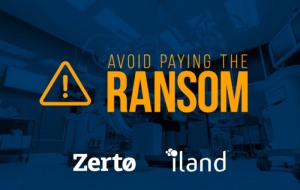by
Christina Hwang, Contributing Reporter | April 04, 2017
Threats to IT are becoming more diverse as ransomware attacks increase in an alarmingly fast manner, especially throughout hospitals and health care facilities.
In the webinar,
Avoid Paying the Ransom, Jennifer Gill, director of product marketing at Zerto, along with Dante Orsini, SVP of business development at iland and Frank Krieger, director of compliance at iland, discuss how disaster recovery (DR) plans can help organizations keep threats at bay.
According to Krieger, there was a three times increase in ransomware in 2016 compared to 2015, and 2017 is on track to be another three times increase from 2016. Illustrating from the image below, he notes how the attacks are concentrated in regions where health care systems are extremely regulated, such as the U.S., the U.K., Germany, and Australia. However, these are the countries that suffer the highest number of breaches.
Orsini believes that trying to keep up with technological innovation while balancing security needs puts organizations at a disadvantage right off the bat.
“Most folks we work with are looking for ways they can offload some of these things and simplify their lives without sacrificing regulatory compliance,” he said. If an organization follows certain regulations, such as HIPAA, and has to perform a DR plan, it must meet the compliance and requirements of that regulation.
Zerto works within the hypervisor, a virtual monitor that detects changes as they occur in an application, and then replicating the changes.
“Think of it as a DVR for your application … You have the ability to actually put a recover time and recovery point objective around an application and monitor that, and be alerted to that, and know at a glance and see what type of recovery time you’re expecting. Better yet, you have the ability to minimize the amount of data you can lose,” said Orsini when speaking about Zerto.
Iland is described as a
disaster recovery as a service (DRaaS), a cloud computing and backup service to protect applications in case of a “disaster”. The information Zerto receives is placed into iland’s cloud, where the hospital or organization is able to test its DR plan before it is actually needed.
To stop an attack from entering or spreading within a hospital system, Kieger provided a few recommendations such as placing software restrictions on what could be downloaded onto a computer, and setting up a “honeypot”, a decoy computer system that sees who is looking into a hospital’s network and who is attempting to breach it.
